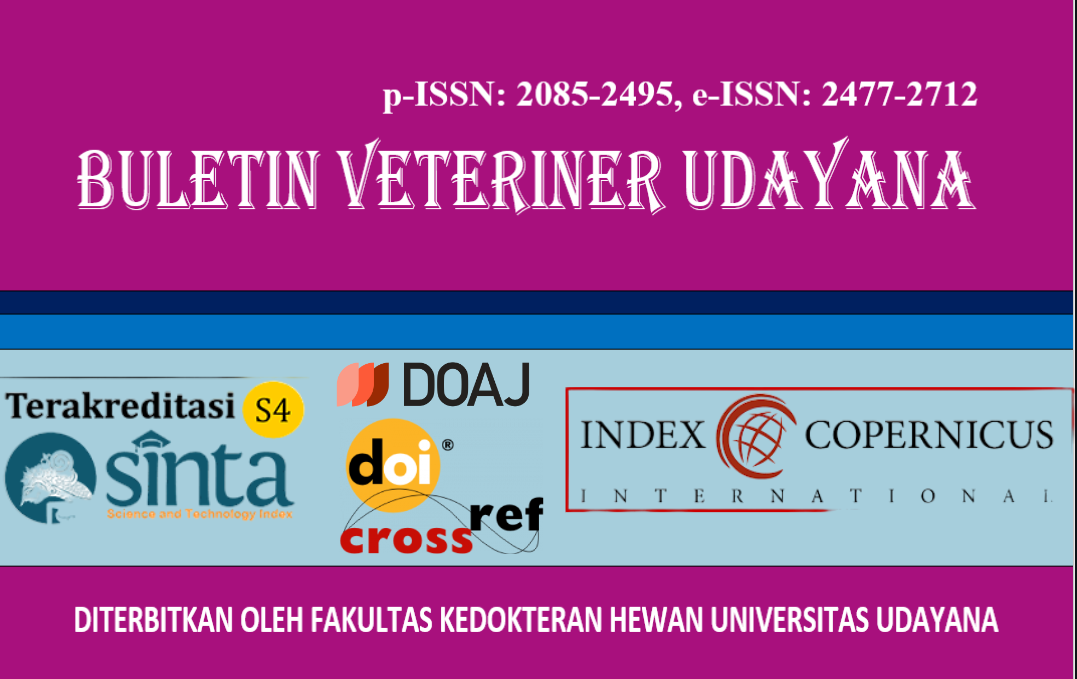CASE REPORT: COINFECTION OF TRICHURIS SUIS AND STREPTOCOCCUS SP. IN A LANDRACE-YORKSHIRE PIGLET FROM BUAHAN VILLAGE, PAYANGAN, GIANYAR
DOI:
https://doi.org/10.24843/bulvet.2025.v17.i04.p37Keywords:
Entamoeba sp., piglet, streptococcosis, trichuriasisAbstract
Pig farming in Bali plays a strategic role in meeting both animal protein demands and cultural needs, yet remains highly susceptible to viral, bacterial, and parasitic diseases. This case report documents a severe coinfection of Trichuris suis (trichuriasis) and systemic beta-hemolytic Streptococcus sp. (presumably S. suis) in a 3.5-month-old weanling piglet from Gianyar. Diagnostic methods included anamnesis, epidemiological investigation, gross pathology, histopathology, bacterial culture/identification, and parasitic examination. The piglet exhibited stunted growth, cachexia, cough, and chronic brown diarrhea. Gross and histopathological findings revealed meningoencephalitis, necrotic-edematous bronchopneumonia, and edematous-degenerative typhlitis. Bacterial isolation identified beta-hemolytic Streptococcus sp. in the brain and lungs, though neurological signs were absent. Necropsy uncovered ~4,700 T. suis in the cecum and colon, with Entamoeba sp. cysts detected in feces. This case highlights: (1) the clinicopathological manifestations of concurrent T. suis and Streptococcus sp. infections, and (2) the critical need for early detection and comprehensive diagnostics in field cases. To mitigate such coinfections, we recommend enhanced biosecurity, routine antiparasitic treatment, and periodic bacteriological surveillance.




